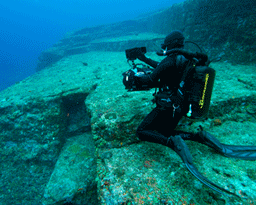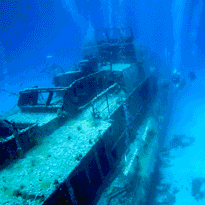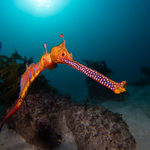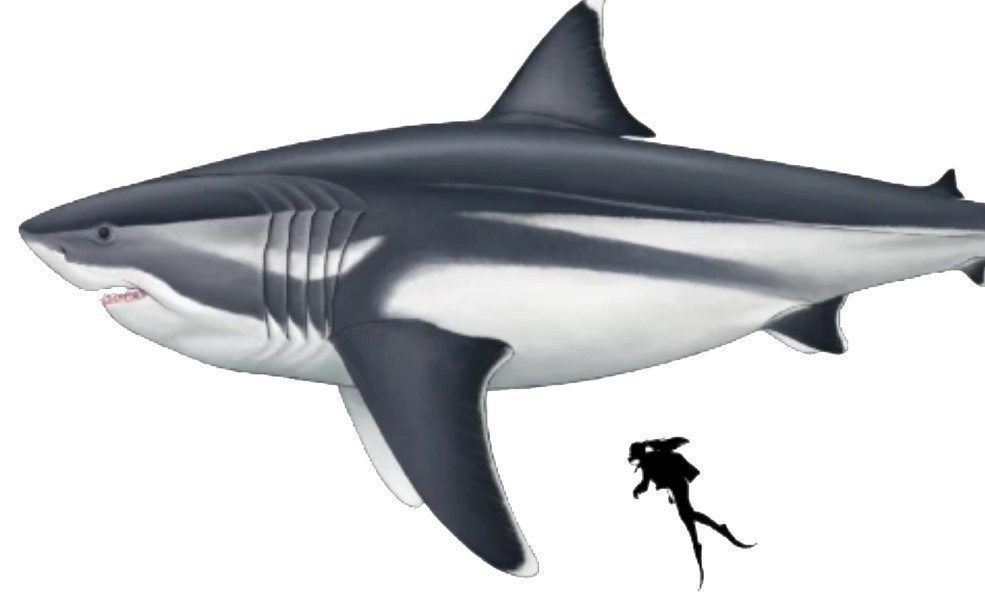
DIVING NEWS
The real Meg – 16m of power
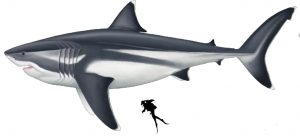
Picture: Oliver E Demuth.
The Meg in the recent film of that name was a prehistoric shark around 23m long, according to the studio, and bigger even than that if you go by the poster. But until now the size of the extinct shark on which the film was based has only ever been estimated.
Now a new UK study has established that while Hollywood did go over the top, the real Otodus megalodon was still an awe-inspiring 16m long. That compares with around 6m for the biggest great white shark, and the megalodon’s dorsal fin alone stood as tall as an adult human. Its jaws also had a formidable bite force – of more than 10 tonnes.
Researchers from the universities of Bristol and Swansea looked beyond previous studies, which had compared megalodon fossil remains only with the dimensions of great whites. This time they compared them with five ecologically and physiologically related modern shark species.
The study was the “dream project” of scuba diver Jack Cooper, who had recently completed a palaeobiology masters degree at Bristol’s School of Earth Sciences.
“I have always been mad about sharks,” he said. “As an undergraduate, I have worked and dived with great whites in South Africa – protected by a steel cage, of course. It’s that sense of danger, but also that sharks are such beautiful and well-adapted animals, that makes them so attractive to study.
“This project was everything I wanted to study since watching Nigel Marven step into a shark-cage and meet a CGI effect of a giant extinct shark just one week before my seventh birthday,” said Cooper. But he explained that studying the megalodon had “always been difficult considering that all we really have are lots of isolated teeth.”
Otodus megalodon died out three million years ago after some 20 million years of existence, and the only fossil remains are triangular cutting teeth bigger than a human hand.
6 September 2020
Cooper’s project was supervised by palaeontologist Prof Mike Benton, also of Bristol, and shark expert Dr Catalina Pimiento from Swansea. Dr Humberto Ferron of Bristol also collaborated.
“Megalodon is not a direct ancestor of the great white but is equally related to other macropredatory sharks such as the makos, salmon shark and porbeagle shark, as well as the great white,” said Dr Pimiento. “We pooled detailed measurements of all five to make predictions about megalodon.”
“Before we could do anything, we had to test whether these five modern sharks changed proportions as they grew up,” added Prof Benton. “If, for example, they had been like humans, where babies have big heads and short legs, we would have had some difficulties in projecting the adult proportions for such a huge extinct shark.
“But we were surprised, and relieved, to discover that in fact the babies of all these modern predatory sharks start out as little adults, and they don’t change in proportion as they get larger.”
This allowed the team to take the growth curves of the five modern sharks and project the overall shape as they grew. The results indicated that a 16m megalodon probably had a 4.65m-long head, 1.62m-tall dorsal fin and a 3.85m-high tail.
The detailed findings are published in the journal Scientific Reports.

The post The real Meg – 16m of power appeared first on Divernet.
Read More Diving News Divernet






